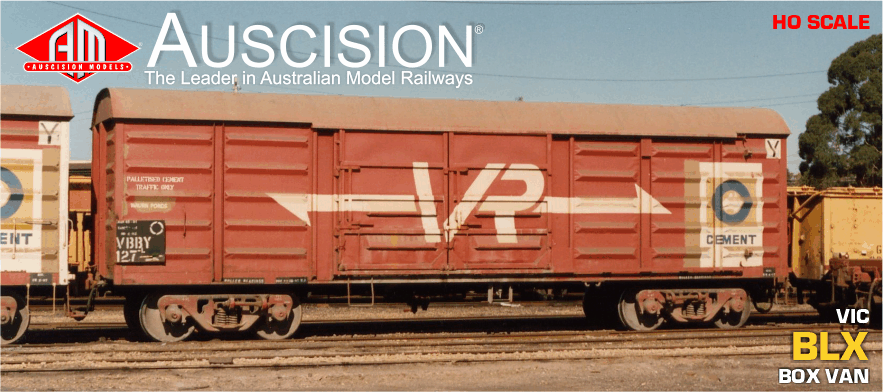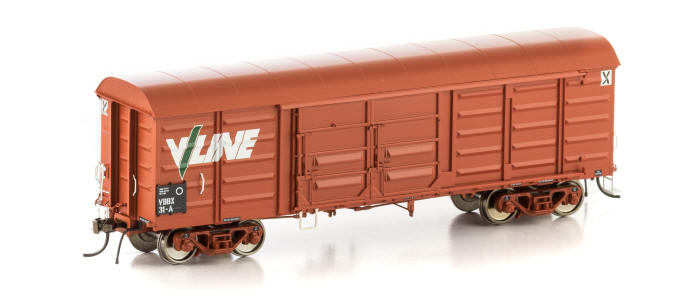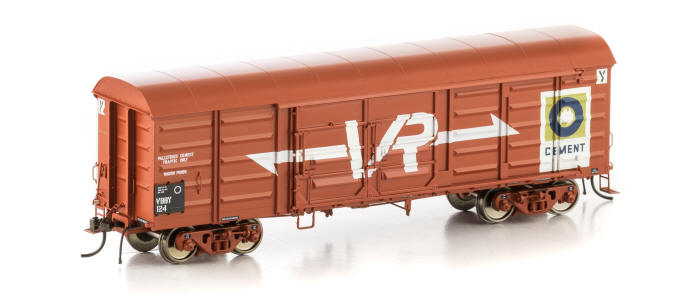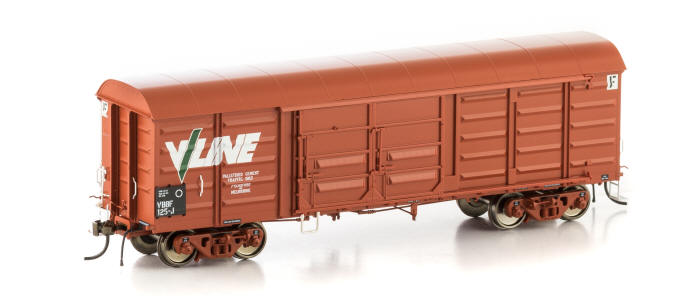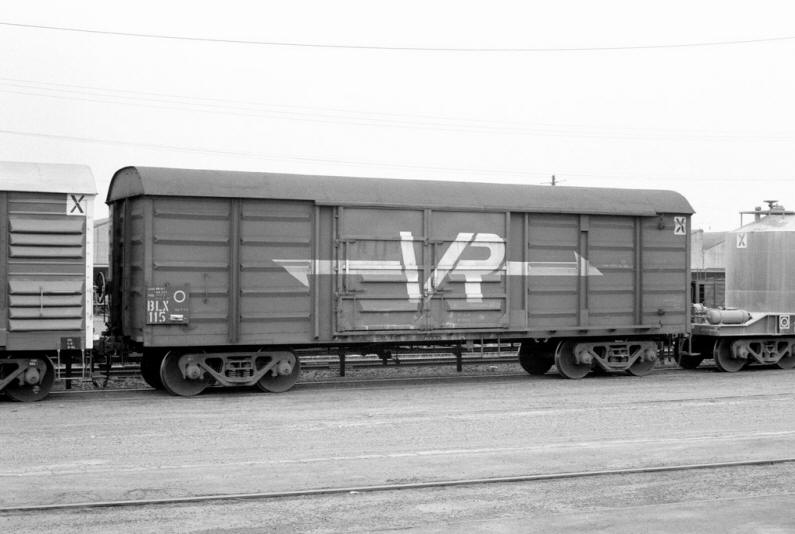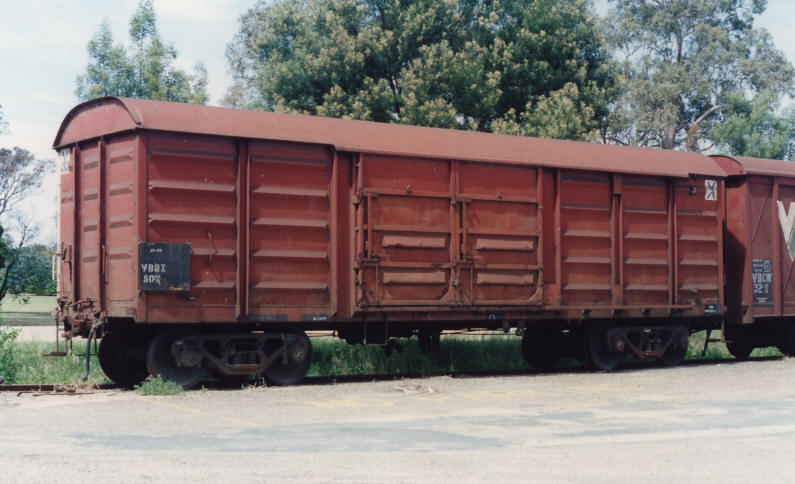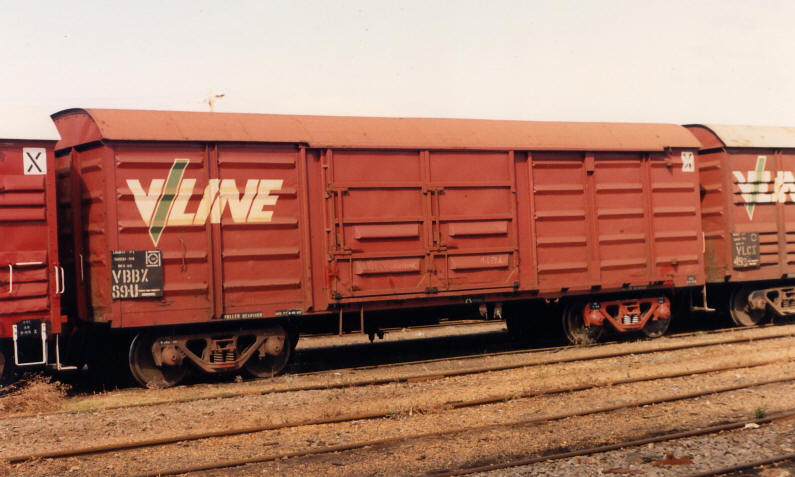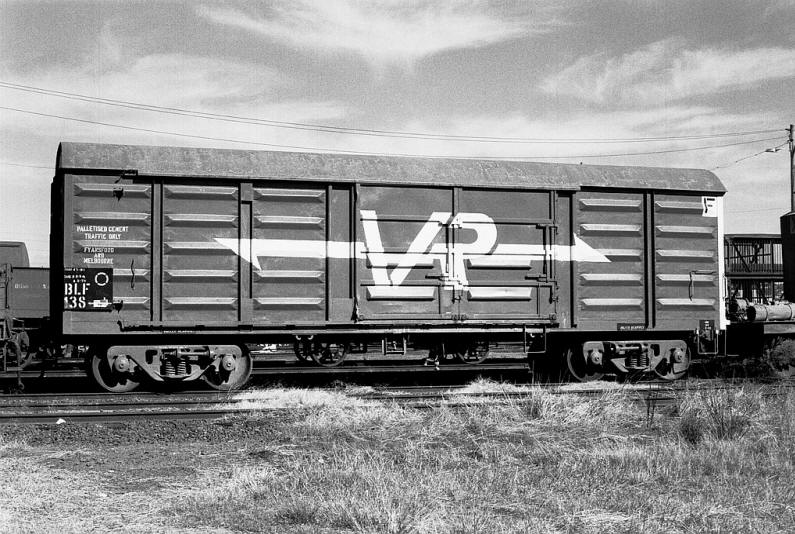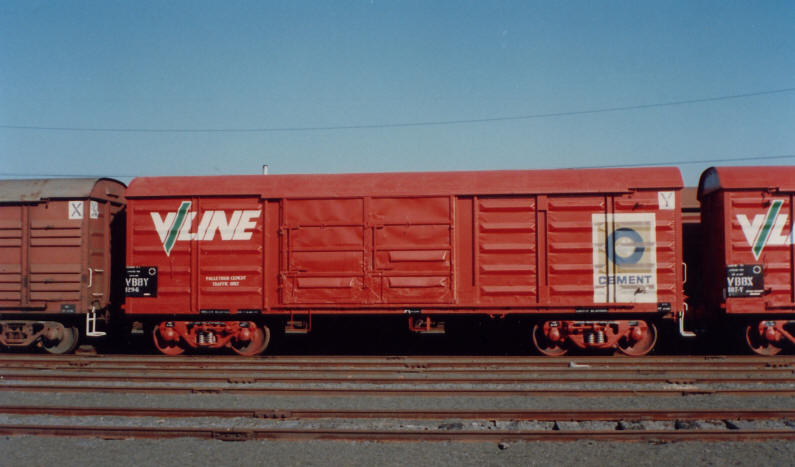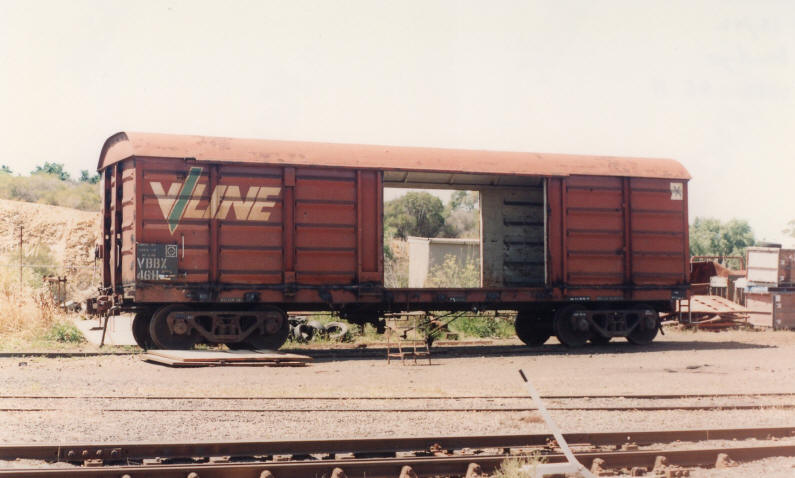BLX Medium VR
BLX Large VR
VBBX Large VR
VBBX No Logo
VBBX V/Line
BLF Large VR
VBBY Blue Circle Cement/VR
VBBY Blue Circle Cement/VLine
VBBF V/Line
BLX Stephens Railex
BLX Box Van – Prototype Notes
BLF
(1961) / BLX / VBBX
Between 1960 and 1962 the
Victorian Railways Newport Workshops built one hundred and
twenty-nine steel boxvans.
Most were delivered coded as BB however during the build a
number were fitted with roller bearing bogies and recoded BF.
In late 1961 all the BB and BF vehicles in service at that
time were recoded to BLF, this code also applying to the final 32
vans of the build when they were delivered.
In a departure from usual VR
practice a new code and number range commencing from 1 was not
selected for these new wagons when introduced, they instead being a
follow on to the existing BB code and road number allocation.
As such the new wagons were numbered 23 to 151.
Between 1963 and 1965, all the BLF vans were modified for bogie
exchange and reclassed to BLX. Although recoded, the number
group remained at 23-151.
In 1967/1968 twenty four vans, numbered 121-144, were modified for
special cement traffic and were recoded to BLF.
During 1979 the Railways of Australia introduced a standardised
four letter coding system. As a result of this the BLX were recoded
as VBBX, with wagons having their code board updated from June 1979.
With the growing use of computers and a need to validate data
input, in August 1983 the use of a check letter character was
introduced. The character, based on an algorithm applied to
the wagon code and road number, was painted on the code board next
to the number.
From around 1990 the vans were removed from service.
Over the years an unknown number, but photos suggest it to be the
vast majority of the class, have had their original style steel
panelled door fitted with four louvres in the bottom half of the
door. Over time further alterations/repairs saw a number of
the vans with a reduced number of door louvres, with some fitted
with none, one, two or three louvres only.
Three vans were also fitted with a door similar in appearance
to a VSX door but to a smaller size.
In the early days the wagon was adorned with either a small or medium sized VR emblem. From early 1972 the VR standardised the emblem to a larger 25’ version. In August 1983, the new V/Line emblem was progressively introduced across the wagon fleet.
BLF
(1967) / VBBY/F
During 1967/68 twenty four BLX vans, numbered 121 to 144, were
placed into dedicated palletised cement traffic. These vans
were recoded from BLX back to BLF. These vans were loaded at the
Fyansford cement plant, located near Geelong, for consignment to
areas mainly within the Melbourne metropolitan area but also to
regional Victorian regional centres as well.
All vans were originally stencilled at the left hand end of each
side “PALLETISED CEMENT TRAFFIC ONLY FYANSFORD AND MELBOURNE”.
Over time the wording and the placement of the stencil did vary,
particularly when the emblem changed from VR to V/Line. In the
early 1980s a number of the vans were provided with a colourful Blue
Circle Cement banner at the right end of the wagon. In the 1979 recoding the BLF were recoded to VBBY. During 1987 the letter 'Y' in the coding structure was changed to 'F' and the class were altered from VBBY to VBBF. The class was placed in storage from 1991. BLX Box Van – Prototype Photos
|
|||||||||||||||||||||||||||||||||||||||||||||||||||||||||||||||||||||||||||||||||||||||||||||||||||||||||||||||||||||||||||||||||||||||||||||||||
